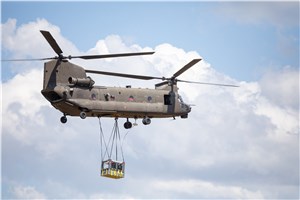
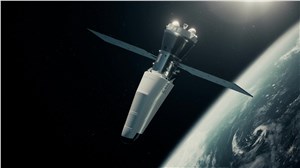
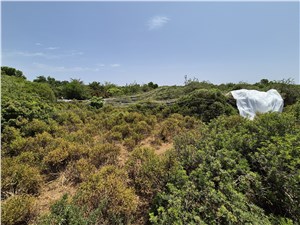
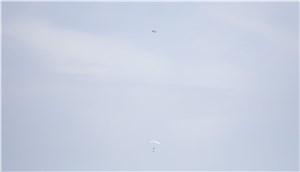
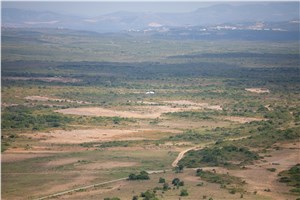
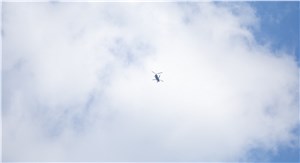
In brief
In-depth
Space Rider is ESA’s reuseable spacecraft in development. It will be about the size of two minivans and will allow for many kinds of missions, ranging from pharmaceutical research to in-orbit manufacturing, visiting orbital platforms and more. After staying in Earth orbit for up to three months, Space Rider will return through our atmosphere to precision-land on skids after a paraglider descent.
Following a two-month drop-test campaign in 2024, the Space Rider team returned to the Salto di Quirra testing range (Poligono Interforze del Salto di Quirra - PISQ), in Sardinia, Italy, for two weeks of testing. The drop-test campaign last month included the flight-control algorithm that guides Space Rider on its own to a target landing point.

A Global and Regional Analysis: Focus on Platform, Battery Type, Power, and Country Level Analysis
Download free sample pagesThe drop-test campaign had two objectives: the qualification of the parachutes used to slow the spacecraft during descent, and to test the software that controls the parafoil, guiding the Space Rider’s reentry module to its precise landing site. Space Rider models were dropped from a CH-47 Chinook Italian Army helicopter from altitudes ranging from 1 to 2.5 km, at the Italian military's training and experimentation area Salto di Quirra.
A chain of parachutes
When Space Rider returns from orbit it will be flying over six times faster than the speed of sound and heat up to intense temperatures over 1600ºC as the spacecraft reentry module starts hitting the molecules in our atmosphere.
To slow down and land securely and safely, Space Rider features a sequence of parachutes that deploy: a circular drogue chute that opens just below the speed of sound for first braking, and a pilot chute that is used to drag out the large parafoil at 5 km altitude that will guide Space Rider to a precision landing.
Three descent-system drop-tests were performed, during which these parachutes were successfully deployed. The tests proved the parachutes could reduce speed as required and verified the extraction and inflation sequence of the entire parachute chain, from drogue to parafoil.
Closed-loop autonomous landing
Three closed-loop drop tests were successfully performed as well, on another test-model. The closed-loop drop-test model is a metal pallet equipped with measurement devices, control avionics, two winches to pull the parafoil’s steering lines, a canister to store the packed chutes and a concrete ballast to meet the weight of Space Rider’s reentry module.
Once released from the helicopter, this test model descended autonomously until touchdown, relying solely on its sensors and actuators, without any control from ground.
Although “salto” means “jump” in Italian, the test campaign demonstrated that Space Rider will be able to land gently down to an accuracy of just 150 m: this ambitious target is a remarkable achievement for Europe and is a world-first for precision landing under parafoil. The model flew for 12 minutes from 2.5 km altitude, with a vertical speed of 4 m/s, landing at 2 m/s, all controlled by the parafoil system.
The tests were made possible through strong collaboration between industry and the Italian defence sector. This drop-test campaign was led by Thales Alenia Space Italia, prime contractor for Space Rider and responsible for the reentry module, with strong support from industrial partners Sener, CIMSA, Teseo and Meteomatics. The Italian Air Force and Army played a key role, providing essential support for ground logistics and flight operations including access to the Salto di Quirra testing range.
Next: full system
A few more steps remain to complete the test verification of Space Rider's descent and landing phase. A system drop-test campaign, featuring a full mockup of the reentry module that will have the same weight, aerodynamic shape and landing gears as the real thing will demonstrate the overall landing and touchdown.
A final campaign will test landing stability by exploring worst-case scenarios of a Space Rider touchdown. For this test, another model with a landing gear will be accelerated on a roller-coaster-like rig and dropped onto a landing site. This campaign will ensure that the landing does not subject precious scientific payloads to excessive shocks – no rough landings allowed.
This final step will also be conducted with the support of the Italian Ministry of Defence, making use of a new landing facility at the Salto di Quirra testing range. The site was set up to accommodate activities such as suborbital reentry module tests and suborbital missions.
Space Rider is designed for a quick turnaround: following each mission, it will undergo six months of maintenance before going back to space again and run more experiments.
To orbit and back with Space Rider